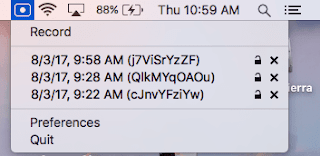

The final step in connecting your laptop to a monitor, is to actually connect your laptop to your monitor. We have guides on HDMI 2.1, and its earlier standard, HDMI 2.0, as well as the high-end DisplayPort 2.1. The specifications for different cables and connections can vary dramatically between generations, so you'll need to look at what you have, and what you want, to see which is best. If you have multiple connection options, then pick whichever one is the most convenient for you whilst also supporting the refresh rate and resolutions you want to run the monitor at. You could also use a docking station or hub to give yourself a range of connection options, though that's typically more expensive than a single adapter, and some of them need external power. For example, there are HDMI to DisplayPort adapters, or USB-C to HDMI adapters. There are ways to convert just about any video port into another. However, if your monitor has different connection options to your laptop, then you might need to use an adapter or converter. HDMI to HDMI, USB-C to USB-C, DisplayPort, to DisplayPort, and so on. If both your laptop and the monitor have the same type of connection option, then you can use that cable type with no extra complexity. Now that you know what connections you can use at each end of the connection, you need to decide on the cable you're going to use.
#RECORDIT ON EXTENDED MONITOR HOW TO#
This GPT-powered Discord bot can teach you a new language - here’s how to use itīest laptop deals: Get a new laptop for work or play from $169ĭon’t miss your chance to get this 15-inch HP laptop for $280 You can follow our guide on choosing a monitor, or take a look at our list of the best monitors for additional help. If you're buying a new monitor to use with your laptop, buy one that has a port that's compatible with the output options from your laptop. Some monitors also support USB-C as an input option, which makes connecting modern laptops with USB-C connections very easy. Most modern(ish) monitors will support HDMI and DisplayPort, while older ones will support more legacy connection options like DVI-D and VGA. Turn it around, or upside down - depending on where it's connectors are located - and see what you're working with. Step 2: If you already have a monitor that you want to use with your laptop, then you need to look at the connection options it has, too. Want some more information on identifying ports? Here's our guide to all of your laptop connectors. While it won't necessarily be easy to find a compatible monitor to work with those standards, they're still a viable solution for using a monitor with your laptop. Older laptops may have legacy outputs like VGA or mini-DisplayPort, too. The exact specifications of it can vary dramatically, as newer USB4 and Thunderbolt 3/4 ports use the same USB-C connector, but can support much greater bandwidths and therefore resolutions and refresh rates. Most modern laptops come with some form of USB-C connector. Some laptops have an HDMI output, which can make connecting an external monitor very easy, as almost any modern display supports HDMI. Step 1: Grab your laptop and look on its sides and on the back to see what kind of ports it has.

Before you can connect a monitor to your laptop, you need to know what kind of connection options you have.


 0 kommentar(er)
0 kommentar(er)
